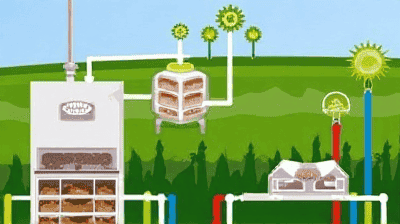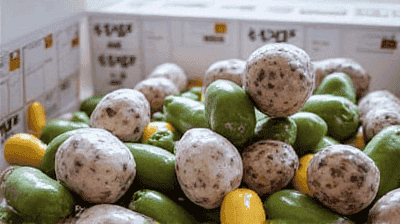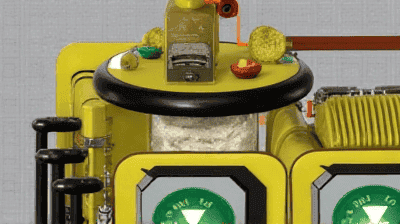
Food waste is an increasingly critical issue around the world. According to the Food and Agriculture Organization (FAO), approximately one third of all food produced globally is wasted. This not only represents a significant loss of resources but also contributes to greenhouse gas emissions and environmental degradation. As society seeks sustainable solutions to combat waste, anaerobic digestion has emerged as a promising method for converting food scraps into biofuel. This process not only helps mitigate food waste but also provides renewable energy in the form of biogas.
Food waste occurs at all stages of the food supply chain, from production and processing to retail and consumption. In developed countries, a significant portion of food waste arises from consumer behavior, while in developing nations, the loss often occurs at the production and storage stages due to inadequate infrastructure. The FAO estimates that around 1.3 billion tons of food waste are generated each year, which has severe economic, environmental, and social implications.
The environmental impact of food waste is staggering. When food is discarded, all the resources used in its production—including water, land, energy, and labor—are wasted as well. Furthermore, food waste that ends up in landfills contributes to methane emissions, a potent greenhouse gas that is significantly more effective than carbon dioxide in trapping heat in the atmosphere. According to the Intergovernmental Panel on Climate Change (IPCC), methane accounts for about 15% of global greenhouse gas emissions.
Addressing food waste is critical in the fight against climate change and environmental degradation. Sustainable solutions are needed to reduce waste production and to manage the waste that is generated effectively. One promising approach is the conversion of food waste into renewable energy through anaerobic digestion.

Anaerobic digestion is a biological process that occurs in the absence of oxygen, where microorganisms break down organic materials, such as food waste and agricultural residues, into simpler substances. This process results in the production of biogas, a renewable energy source, along with a nutrient-rich digestate that can be used as a fertilizer.
The anaerobic digestion process can be divided into four key stages:
Hydrolysis: In this initial stage, complex organic materials (carbohydrates, lipids, and proteins) are broken down into simpler sugars, fatty acids, and amino acids. This stage is facilitated by hydrolytic bacteria, which secrete enzymes that degrade large organic molecules.
Acidogenesis: During this phase, the simple compounds produced in hydrolysis are converted into volatile fatty acids (VFAs), hydrogen, and carbon dioxide by acidogenic bacteria. This process leads to the generation of an acidic environment, which is favorable for further microbial activity.
Acetogenesis: In this stage, the VFAs produced during acidogenesis are further degraded by acetogenic bacteria into acetic acid, along with additional hydrogen and carbon dioxide. This transition is critical as acetic acid is a key substrate for methanogens.
Methanogenesis: This final stage is where methanogenic Archaea convert acetic acid, hydrogen, and carbon dioxide into methane (CH4) and carbon dioxide (CO2). The biogas produced during this stage typically consists of 50-70% methane, making it a valuable renewable energy source.
Anaerobic digesters can vary in design and operation, depending on the specific feedstock and desired outcomes. Common types include:
Batch Digesters: These systems process organic waste in batches, filling the digester with a specific amount of feedstock, allowing it to digest over a defined period before being emptied and refilled.
Continuous Digesters: In these systems, organic waste is continuously fed into the digester, which allows for steady production of biogas over time. Continuous systems can be more efficient and scalable for larger operations.
Plug-Flow Digesters: These digester designs feature a long, narrow tank where the feedstock moves through the digester in a "plug" fashion. This type is particularly effective for high solids content feedstocks, such as agricultural residues.
Complete Mix Digesters: In complete mix systems, the contents are continuously mixed, ensuring uniform distribution of microorganisms and nutrients, which can enhance methanogenesis and biogas production.
Food waste serves as an excellent feedstock for anaerobic digestion due to its high organic content and moisture levels. Sources of food waste that can be processed include:
Restaurant and Food Service Waste: Leftover food, food prep scraps, and other organic waste generated by restaurants, cafeterias, and food processing facilities.
Household Waste: Organic waste collected from residential sources, including kitchen scraps, expired food, and garden waste.
Agricultural Residue: Leftover plant material, such as fruit peels, vegetable trimmings, and crop byproducts.
Utilizing a mix of these feedstocks can optimize biogas production and improve the overall efficiency of the digestion process.
Collection and Preparation: Food waste is collected from various sources and may undergo preliminary sorting to remove non-organic materials. It is often shredded to size, ensuring better mixing and faster degradation during digestion.
Feeding the Digester: Once prepared, the food waste is fed into the anaerobic digester. It may be mixed with other organic materials to achieve optimal nutrient balance and moisture content.
Biogas Generation: Within the digester, the anaerobic digestion process occurs, leading to the production of biogas. This biogas can be harnessed for various applications, such as electricity generation, heating, or upgrading to biomethane for use as vehicle fuel.
Digestate Management: After digestion, the remaining material, known as digestate, is evaluated. This nutrient-rich substance can be further processed for use as an organic fertilizer or soil amendment, closing the loop in nutrient cycling.
The biogas produced from anaerobic digestion can be utilized in various ways, including:
Electricity Generation: Biogas can be burned in combined heat and power (CHP) systems to generate electricity and heat simultaneously. This on-site power generation can reduce reliance on fossil fuels and lower energy costs.
Heating Applications: The heat generated during biogas combustion can be used for space heating, heating water, or powering industrial processes.
Vehicle Fuel: Biogas can be upgraded to biomethane through a process that removes impurities, producing a gas that meets the quality standards for natural gas vehicles. This transition promotes renewable energy in transportation, reducing greenhouse gas emissions.
Injecting into the Gas Grid: Upgraded biogas can be injected into existing natural gas pipelines, allowing for its broader distribution and use as a renewable energy source.

Anaerobic digestion offers a sustainable solution for managing food waste by diverting it from landfills. This process not only reduces the volume of waste sent to landfills but also minimizes the associated environmental impacts of waste disposal.
By converting food waste into biogas, anaerobic digestion plays a crucial role in producing renewable energy. This reduces greenhouse gas emissions and fossil fuel consumption, making it a key component in the transition to a more sustainable energy system.
The digestate produced from anaerobic digestion is rich in essential nutrients such as nitrogen, phosphorus, and potassium, which can be used as an organic fertilizer. This aligns with sustainable agricultural practices and reduces reliance on synthetic fertilizers.
By capturing and utilizing methane that would otherwise be released during the decomposition of food waste in landfills, anaerobic digestion significantly lowers overall greenhouse gas emissions. Methane is a potent greenhouse gas, and its capture contributes to climate change mitigation efforts.
The establishment of anaerobic digestion facilities creates economic opportunities, including jobs in construction, operation, and maintenance. Furthermore, local governments and businesses can save on waste disposal costs while generating revenue from the sale of biogas and digestate.
Despite its many benefits, the adoption of anaerobic digestion faces several challenges:
The construction and installation of anaerobic digestion plants require substantial initial investment. Many municipalities and businesses may be deterred by the upfront costs, even if long-term savings are expected.
The composition of food waste can vary significantly, affecting the efficiency of anaerobic digestion. Variability in moisture content, nutrient balance, and contamination with non-organic materials can pose challenges in maintaining optimal operating conditions.
Anaerobic digestion requires specialized knowledge and skills for proper operation and maintenance. The need for trained personnel may create barriers to entry for smaller operations or community-based initiatives.
Public perception of anaerobic digestion facilities can impact their acceptance. Concerns regarding odors, noise, and potential health risks may hinder the development of new facilities in certain communities.
Navigating the regulatory landscape associated with anaerobic digestion can be complex. Different regions may have varying requirements regarding permitting, emissions standards, and the handling of organic waste, which can hinder project development.

One notable example of anaerobic digestion comes from a landfill gas-to-energy project in the United States. The facility captures methane produced during the decomposition of organic waste in landfills and converts it into electricity. This project significantly reduces methane emissions and provides renewable energy for the local grid.
Another successful case study is the London Biofactory, an anaerobic digestion facility that processes food waste collected from restaurants and grocery stores. The facility generates biogas that is used to produce electricity and heat, while the digestate is sold as organic fertilizer. This project effectively reduces landfill waste and provides renewable energy for the community.
In Vermont, a farm-based anaerobic digester processes cow manure and food waste to produce biogas. This renewable energy is used to power the farm and provide surplus electricity to the grid. The digester also produces valuable nutrients used to fertilize the fields, demonstrating the dual benefits of waste reduction and sustainable energy generation.
The future of anaerobic digestion will likely see continued advancements in technology, including improved digestion processes, better monitoring systems, and enhanced biogas upgrading techniques. These innovations can optimize biogas production and increase the efficiency of existing facilities.
Anaerobic digestion plays a pivotal role in the circular economy, aligning with principles of waste reduction and resource efficiency. As more sectors recognize the value of food waste as a resource, the integration of anaerobic digestion into broader waste management strategies will become increasingly important.
Government policies can significantly influence the adoption of anaerobic digestion by providing incentives, grants, and regulatory support for facilities. Promoting renewable energy and sustainable waste management practices through legislation can accelerate the growth of anaerobic digestion initiatives.
Building public awareness and support for anaerobic digestion is crucial for its success. Educating communities about the benefits of anaerobic digestion and addressing concerns can foster acceptance and encourage local investments in renewable energy projects.
As the world grapples with the challenges of food waste and climate change, the adoption of anaerobic digestion is expected to expand globally. Developing regions with abundant agricultural waste may find anaerobic digestion particularly beneficial for managing waste and generating renewable energy.
Anaerobic digestion presents a powerful and sustainable solution for converting food waste into biofuel and renewable energy. By harnessing the natural processes of microorganisms, we can reduce waste, generate clean energy, and promote nutrient recovery in agriculture. The transition to circular systems of production and consumption cannot be achieved without effective waste management practices.
While challenges remain, the potential of anaerobic digestion to address food waste and climate change is undeniable. As innovations continue and public perceptions evolve, anaerobic digestion can become a cornerstone of a more sustainable future. By embracing this technology, we can contribute to a greener planet and a more resilient economy.